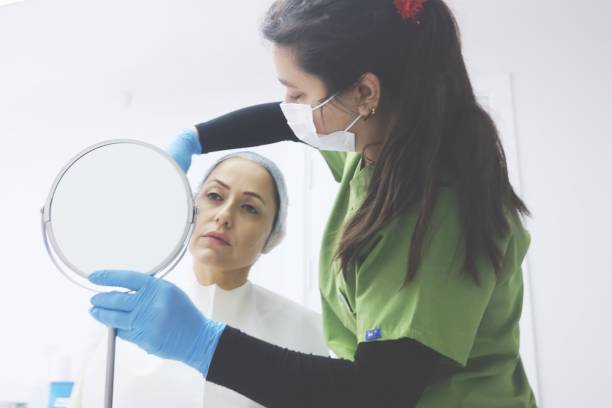Dermal fillers are a popular non-surgical cosmetic procedure used to enhance facial features, reduce the signs of aging, and restore volume to the skin. Like any medical treatment, dermal fillers come with both pros and cons. It’s essential to consult with a qualified healthcare professional to determine if dermal fillers are the right option for you, considering your specific goals and health factors. Here are some pros and cons of dermal fillers:
Pros:
- Non-surgical: Dermal fillers offer a non-surgical and minimally invasive alternative to surgical procedures like facelifts, which come with more significant risks and downtime.
- Immediate results: You can typically see immediate improvements in the appearance of fine lines, wrinkles, and facial volume after a dermal filler injection.
- Minimal downtime: Unlike surgery, which may require weeks of recovery, dermal filler treatments usually have minimal downtime. You can often return to your normal activities right away.
- Customizable: Dermal fillers can be customized to meet your specific needs and goals, allowing for a natural-looking enhancement.
- Temporary: Most dermal fillers are temporary, which means if you’re not satisfied with the results or want to change your look, you can do so without permanent consequences.
- Versatility: Dermal fillers can be used to address various cosmetic concerns, such as adding volume to lips, cheeks, and temples, filling in wrinkles and folds, and improving the appearance of scars.
- Low risk of complications: When administered by a skilled and experienced practitioner, the risk of severe complications is relatively low.
Cons:
- Temporary results: The effects of dermal fillers are not permanent and typically last anywhere from several months to a couple of years, depending on the type of filler used. Maintenance treatments are required to maintain results.
- Cost: Dermal filler treatments can be costly, and because the results are temporary, ongoing maintenance can add up over time.
- Bruising and swelling: Bruising, swelling, and redness at the injection site are common side effects that can last for a few days after the procedure.
- Allergic reactions: While rare, some individuals may experience allergic reactions to dermal fillers. It’s essential to discuss any allergies or sensitivities with your healthcare provider before treatment.
- Infection and other complications: Although uncommon, there is a risk of infection, lumps, asymmetry, or other complications associated with dermal filler injections.
- Skill-dependent: The results of dermal filler treatments heavily depend on the skill and experience of the practitioner. Choosing a qualified and experienced injector is crucial to achieving the best outcomes.
- Gradual loss of results: Over time, the body naturally absorbs the filler material, leading to a gradual loss of results. This may require ongoing maintenance treatments to maintain your desired look.
It’s crucial to consult with a board-certified healthcare provider or licensed aesthetician who has experience with dermal fillers to discuss your goals, evaluate your candidacy, and weigh the pros and cons to make an informed decision about whether dermal fillers are right for you.

What are the risks of dermal fillers?
Dermal fillers are generally considered safe when administered by a trained and qualified healthcare provider. However, like any medical procedure, there are risks and potential complications associated with dermal fillers. It’s essential to be aware of these risks and discuss them with your healthcare provider before undergoing treatment. Some of the potential risks of dermal fillers include:
- Bruising and Swelling: Bruising and swelling at the injection site are common side effects of dermal filler treatments. These effects are usually temporary and can last for several days to a week.
- Redness and Tenderness: You may experience temporary redness and tenderness at the injection site, which typically resolves within a few days.
- Infection: Although rare, there is a risk of infection following dermal filler injections. It’s essential to follow post-treatment care instructions to minimize this risk.
- Allergic Reactions: While uncommon, some individuals may have an allergic reaction to the filler material. Symptoms can range from mild irritation to severe allergic reactions, including swelling, hives, and difficulty breathing. Make sure to discuss any known allergies with your healthcare provider before treatment.
- Lumps and Bumps: Occasionally, dermal fillers can lead to the formation of lumps or bumps under the skin. These may need to be corrected through additional treatments.
- Asymmetry: In some cases, dermal fillers may result in uneven or asymmetrical results. This can sometimes be corrected with additional injections or adjustments.
- Vascular Complications: Injecting fillers in certain areas carries a risk of inadvertently damaging blood vessels, leading to complications like skin necrosis (tissue death) or even blindness. This risk is extremely rare but highlights the importance of choosing an experienced injector.
- Nodules or Granulomas: In rare instances, the body may react to the filler material by forming nodules or granulomas (small, firm bumps). These may require treatment to resolve.
- Migration or Displacement: Fillers can sometimes migrate or become displaced from the intended injection site. This can lead to suboptimal results and may require correction.
- Filler Dissolution Issues: Depending on the type of filler used, it may not be easily reversible. Some fillers can be dissolved with specific enzymes (hyaluronidase) if needed, while others cannot.
- Scarring: In rare cases, dermal fillers can cause scarring or tissue damage.
- Long-Term Effects: The long-term effects of repeated filler injections are not fully understood, as the longevity of fillers varies. Some fillers may stimulate collagen production, which can have both positive and negative long-term effects on the skin.
To minimize the risks associated with dermal fillers, it’s crucial to choose a skilled and experienced healthcare provider, follow all pre- and post-treatment instructions, disclose any medical conditions or allergies, and have a thorough consultation to discuss your goals and expectations. Your provider will assess your suitability for treatment and help you make an informed decision based on your individual needs and potential risks.
